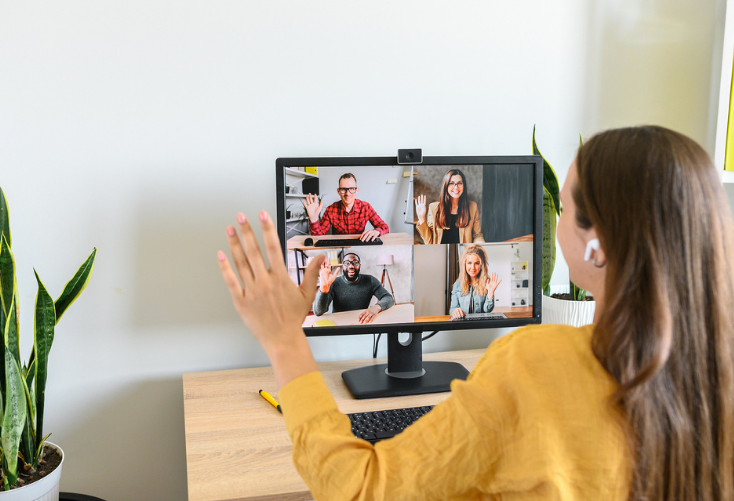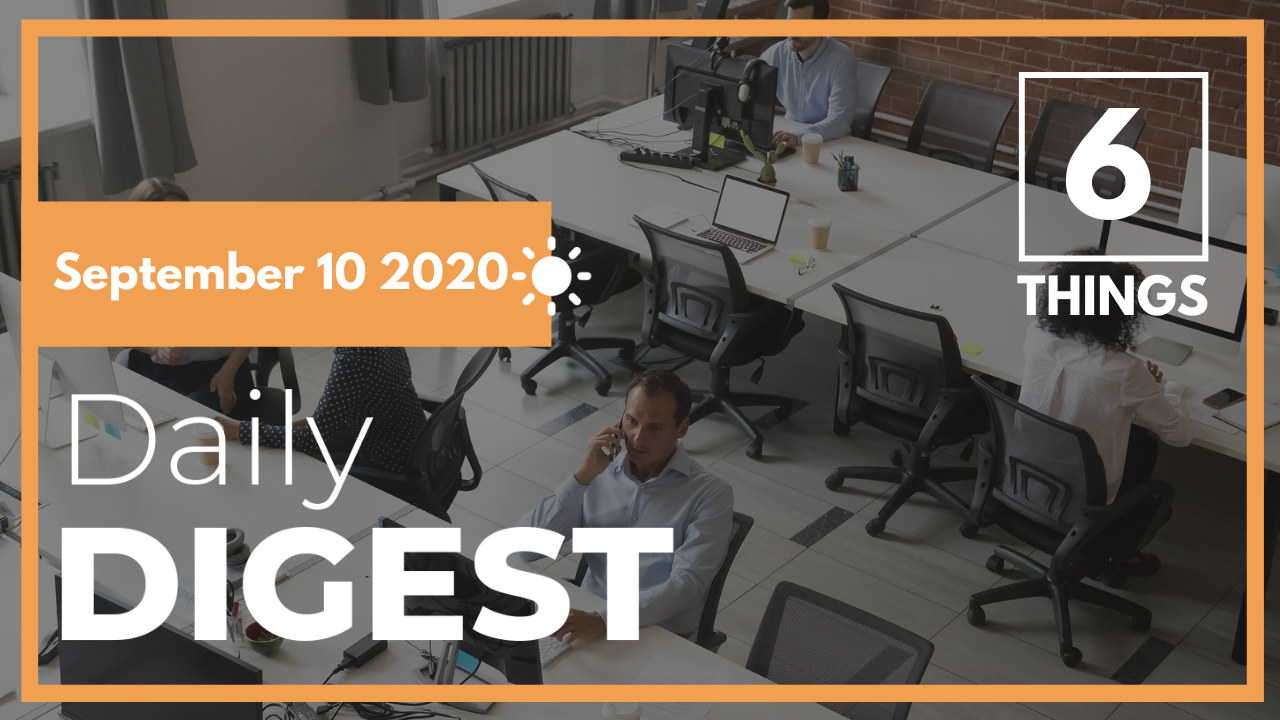Hand selected flexible workspace news from the most reliable sources to keep you ahead of the pack. We find all the latest news, so you don’t have to. Morning and afternoon updates. Stay in the know.
Here’s what you need to know today:
- Industrious And Proper Hospitality Offer New Work Option NEW
- The Future Of Workplaces Other Than The Office NEW
- Virtual Coworking Is On The Rise NEW
- Workplace Flexibility Has Become Indispensable
- The Future Of Talent Recruitment
- Hybrid Working Means More Than Two Options
Industrious And Proper Hospitality Offer New Work Option
Flexible office provider Industrious has partnered up with Proper Hospitality to transform its suites into private workspaces.
Proper Hotels is known for its emphasis on community and “uncommon luxury.” It often teams up with local businesses to incorporate food, drink, technology, art, music, fashion and wellness into their spaces.
Workers can rent a suite from Industrious Proper Hotel Suites on a daily, weekly or monthly basis for up to six guests or colleagues.
At the moment, the service is available at Proper’s Austin, San Francisco and Santa Monica locations, with plans to expand the program under its sister brands Avalon Beverly Hills, Avalon Palm Springs, Hotel June and Ingleside Inn.
Users of the suites will have access to WiFi, digital access to The New York Times, printing services, Nespresso machines, snacks and water, room service, as well as the hotel’s other amenities.
“With remote work continuing for the foreseeable future, there’s an urgent need for safe, accessible workspace where and when it’s needed – even for employees who are only going to the office once or twice a week,” said Jamie Hodari, CEO and cofounder of Industrious. “People are craving an escape from working from home, but that doesn’t mean they’re ready to get back to the traditional open office. We’re so excited to work with Proper to provide just that sort of novel option.”

The Future Of Workplaces Other Than The Office
The pandemic has allowed many of us to master the art of conducting business from home with tools and resources such as Slack or Zoom, but where does that leave the role of the physical workplace?
While some have been quick to dismiss the role of the office in the future of work, it has become clear that they are still necessary. Research has found that many workers have expressed that they miss coming into the physical workplace and having face-to-face interactions with their colleagues.
However, the way we worked prior to the pandemic is no more. Major companies have already committed to allowing their employees to work from home indefinitely, but this is mainly for white-collar, knowledge workers.
Unfortunately, blue-collar workers have been twice as likely to die from COVID-19 as they have no option but to either physically go to work or not work at all.
So while the office can easily be reformatted to be a safe haven for workers who want to socialize with their colleagues a few times each week, what about those in warehouses and factories?
Overall, business leaders need to not only worry about the quantity of jobs in the future, but also the quality of the workplace and the employee experience.

Virtual Coworking Is On The Rise
Diana Calvo Martínez spends most of her days studying microbes in a laboratory or analyzing graphs from her living room while she works on completing her PhD in environmental biotechnology.
While this seems pretty standard for today’s workforce, Calvo Martínez does all of this using Ultraworking, where she gets her work done in front of an audience. The online “work gym” brings people together on a Zoom call with everyone’s cameras on, so they can work together in 30-minute cycles.
Calvo Martínez logs into Ultraworking after putting her three-year-old daughter to bed between 8 p.m. and 2 a.m. She said that the company keeps her motivated when working throughout the night.
“I was diagnosed with anxiety and depression, and a big reason was not being able to work or be productive,” said Calvo Martínez. “Ultraworking has been one of the key ingredients to making my mental health a little better.”
This form of virtual coworking has started becoming more common as people settle into working from home for the foreseeable future.
Working from home has its own perks, but its biggest downfall admis the pandemic has been loneliness and isolation. So having other workers holding you accountable has helped professionals focus better, while providing a sense of community.
“You say you’ll go to the gym, and then you don’t,” said Sebastian Marshall, CEO of Ultraworking. “But if you’ve got a gym buddy or a personal trainer, you’re not going to blow them off.”

Workplace Flexibility Has Become Indispensable
Microsoft has revealed new guidelines for their operations, namely that remote working will continue to play a huge role now and in the future.
The company will now allow employees to work from home permanently for at least part of the time. Additionally, staff will now have more work schedule flexibility which will allow them to have the freedom to choose when they work.
Flexibility in the workplace has proven to be an invaluable asset for businesses. Allowing employees to be agile gives them the chance to work when they are most productive.
Some people may work best from their home so they can make sure their children are getting to school safely or attending their virtual classes. However, others may prefer to come to the office to get away from the distractions of homes.
However an employee chooses to work, having a choice tells workers that their managers trust them to get their work done, thus boosting their job satisfaction.
“Flexibility can mean different things to each of us, and we recognize there is no one-size-fits-all solution given the variety of roles, work requirements and business needs we have at Microsoft,” writes Kathleen Hogan, Chief People Officer at Microsoft.
However, it is essential for business leaders to avoid placing judgment on those who do opt to stay at home. Looking at who is more productive is itself counterproductive to nurturing a healthy work culture.

The Future Of Talent Recruitment
Remote working has officially become a mainstay for companies large and small. Just one year ago, working from home may have been seen as a perk, but in a pandemic-fueled society it has become a necessity.
Research has found that many workers want to continue remote working even after the virus is no longer an issue, marking a permanent shift to a more flexible work environment for many.
This means organizations will need to reevaluate their hiring and management strategies, which can be done seamlessly through predictive intelligence and AI.
Deciding which jobs can be done remotely and those that need to be done in person is the first step in recruiting new talent.
AI can help business leaders identify how to decide how the role will fit into workplace operations. Does it require a lot of teamwork and collaboration? Can the job be done remotely or does the worker need to be on-site? Which market would offer the best talent pool? And so forth.
For instance, if you are a business looking for a software engineer, you may turn to Boston since there is an influx of tech talent in the city. However, the cost for talent is higher and supply is lower due to increased competition, so you could look into the talent pool in a tech hub that goes largely ignored, like Greenville, South Carolina.
AI tools can help employers identify the best choice by evaluating the company’s culture, the role requirements and can recommend which potential candidate would make the ideal fit without uncertainty.

Hybrid Working Means More Than Two Options
Organizations are preparing to make adjustments for the future of work, and this largely includes the adoption of a hybrid work arrangement.
However, a hybrid approach is not binary. While at first glance, hybrid could mean either working at home or in the office, but it can be more than just two options.
Over the last several months, work preferences have changed as a larger amount of workers have had the opportunity to experiment with different arrangements.
“For employers and employees, we’ve been stuck in a very traditional bipolar debate between office and home, whereas there’s lots of choice and it’s not just about physical space,” said Chris Kane, former head of corporate real estate at BBC. “Work is moving from being process work performed in an office, to knowledge work, which can be done in a whole raft of settings.”
This does not indicate that the office is dead. Rather, it is among the many choices of work arrangements that workers will have in the future.
Simply having two options is not flexible enough. For instance, many schools have started letting parents choose to either send their children to school or keep them at home for virtual learning.
However, what if the child cannot learn effectively at home, but is at high-risk of contracting COVID-19? Or what if a parent cannot be home to help their children with their homework, but do not feel safe sending them to school?
Instead of providing two seemingly impossible choices, companies should be more flexible in what works best for their employees.



 Dr. Gleb Tsipursky – The Office Whisperer
Dr. Gleb Tsipursky – The Office Whisperer Nirit Cohen – WorkFutures
Nirit Cohen – WorkFutures Angela Howard – Culture Expert
Angela Howard – Culture Expert Drew Jones – Design & Innovation
Drew Jones – Design & Innovation Jonathan Price – CRE & Flex Expert
Jonathan Price – CRE & Flex Expert















